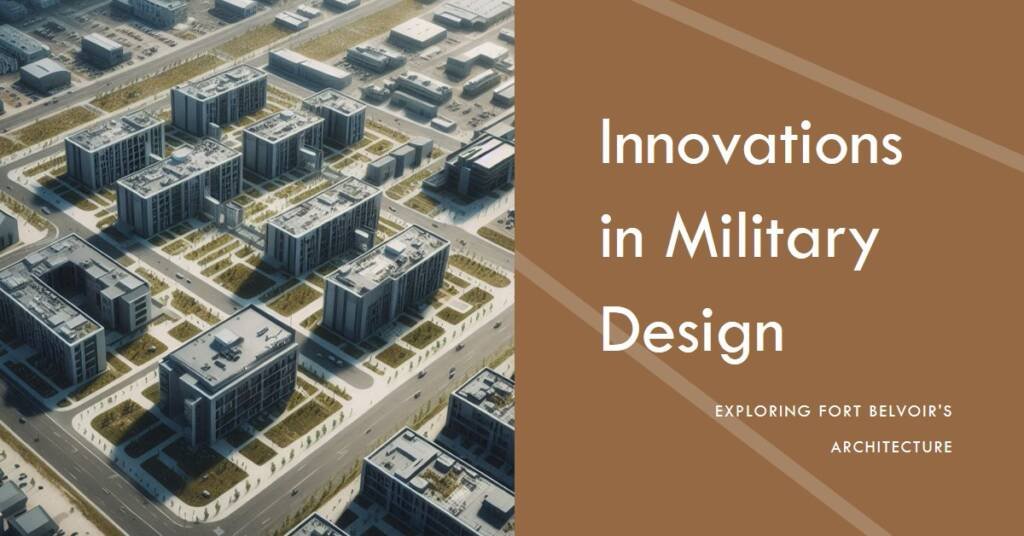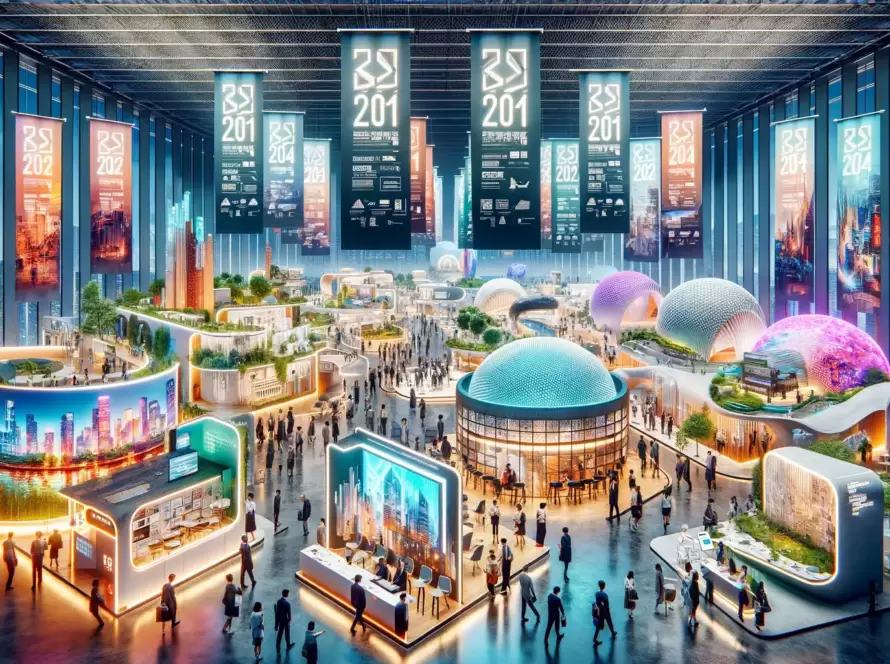
Table of Contents
- Introduction to Fort Belvoir
- Historical Background and Architectural Evolution
- Innovative Design Principles in Military Architecture
- Examples of Modern Facilities and Their Functions
- Sustainability Efforts in Fort Belvoir’s Architecture
- The Role of Technology in Military Architecture
- Community and Cultural Impact of Fort Belvoir’s Architecture
- Future Trends in Military Architecture
- Conclusion: The Importance of Innovation in Military Architecture
Introduction to Fort Belvoir
Fort Belvoir is a historic U.S. Army installation located in Virginia, just south of the nation’s capital, Washington, D.C. Established in 1917, it was initially utilized for various military training purposes, reflecting the American military’s evolving needs during World War I. Over the years, Fort Belvoir has adapted and transformed, becoming a significant hub for military operations, research, and logistics. Its geographical position provides strategic advantages, with proximity to key governmental and defense-related institutions.
The architectural landscape of Fort Belvoir showcases a rich tapestry of military history intertwined with modern innovations. Early structures were designed to accommodate the basic needs of soldiers and operations, but as the military evolved, so did the architecture of the base. This evolution illustrates not only the physical development of the installation but also the shift in military strategies and technologies. Significant buildings, such as the U.S. Army Intelligence and Security Command headquarters, exemplify contemporary military architecture that prioritizes security, functionality, and adaptability.
Throughout its history, Fort Belvoir has served as a centerpiece for various military branches, particularly in intelligence and logistics. The installation has played a critical role in numerous conflicts and peacekeeping missions, adapting to meet the demands presented by dynamic global circumstances. Today, Fort Belvoir is home to various agencies, ensuring that it remains relevant in addressing current operational needs. As the Army continues to evolve in its approach to modern warfare and national defense, the architectural landscape at Fort Belvoir will likely continue to transform, reflecting the ongoing innovations within military architecture.
Historical Background and Architectural Evolution
Fort Belvoir, located in Virginia, has a rich historical background that traces its origins back to the mid-20th century. Established in 1917, the fort was originally conceived as a requirement for military preparedness during World War I. At its inception, the architectural vision was heavily influenced by the need for functionality and efficiency, which were paramount in military design at that time. The initial structures were primarily utilitarian, built with a practical approach that prioritized operational capabilities over aesthetic appeal.
As the years progressed and the nature of warfare evolved, the architectural styles at Fort Belvoir began to reflect the changing demands of military life. During World War II, the base underwent significant expansions, resulting in the construction of numerous buildings designed to accommodate a growing number of personnel and support facilities. This period marked a transition in military architecture from purely functional designs to those that incorporated elements of modernism, incorporating more advanced materials and techniques.
The post-war era brought about a new wave of architectural innovation, inspired in part by advancements in technology and a shift towards more permanent military installations. Fort Belvoir became a site for implementing state-of-the-art design principles, aiming to create environments that not only fostered efficient operations but also improved the quality of life for service members. The buildings began to exhibit more diverse architectural styles, blending functionality with aesthetic considerations, as reflective of broader trends in civilian architecture.
In the late 20th and early 21st centuries, Fort Belvoir continued to adapt to new military strategies and technological advancements. Innovations such as sustainable design practices and energy-efficient construction emerged, demonstrating a commitment to modern architectural ideals. This evolution of military architecture at Fort Belvoir serves as a testament to the U.S. military’s ability to respond to both functional needs and changes in the broader architectural landscape, ultimately illustrating the fort’s ongoing relevance in a dynamic military context.
Innovative Design Principles in Military Architecture
Military architecture, particularly at Fort Belvoir, is characterized by a set of innovative design principles that prioritize functionality, sustainability, and security. These principles guide the architectural decisions, ensuring that the structures serve their intended purposes effectively while adhering to rigorous standards. Functionality is the foremost consideration; military buildings must accommodate a variety of activities, ranging from administrative offices to operational command centers. This necessitates flexible designs that can adapt to evolving requirements, exemplified by modular construction techniques that allow for easy reconfiguration.
Sustainability is another critical aspect of modern military architecture. Fort Belvoir has implemented eco-friendly design practices aimed at reducing energy consumption and minimizing environmental impact. The use of renewable energy sources, such as solar panels and geothermal heating, is increasingly becoming standard in military installations. Green building materials and efficient water management systems are also integral to the design process, aligning with broader military goals of sustainability and resource conservation. These considerations not only enhance the environmental performance of structures but also reduce operational costs in the long run.
Security features are paramount in military architecture and are woven into the very fabric of the design. Fort Belvoir’s facilities incorporate advanced security measures, including reinforced entry points, surveillance systems, and strategic landscaping to deter potential threats. The layout of buildings is often designed to promote visibility and control, allowing for effective monitoring of the surrounding environment. Furthermore, construction materials are chosen not only for their aesthetic qualities but also for their ability to withstand various threats, ensuring that the safety of personnel and equipment remains a top priority.
In summary, the innovative design principles applied in military architecture at Fort Belvoir reflect a comprehensive approach to creating facilities that meet contemporary military needs. By prioritizing functionality, sustainability, and security, these principles ensure that military buildings are well-equipped to support the demanding requirements of defense operations.
Examples of Modern Facilities and Their Functions
Fort Belvoir is home to several modern facilities, each designed with innovative architecture that meets specific operational needs while promoting sustainability. One notable sustainable building within the base is the Anderson Conference Center. This facility is recognized for its energy-efficient systems and environmentally friendly materials, demonstrating the military’s commitment to reducing its carbon footprint. The design incorporates natural light to minimize energy usage, and the building’s landscape features native plant species that require less water, thereby supporting the regional ecosystem.
Another essential facility is the Command and Control Center, which serves as the operational nerve center for joint exercises and mission planning. Designed with advanced technology and a user-friendly interface, this facility enhances communication and coordination among military units. The incorporation of modular workspaces allows for flexibility, facilitating collaborative efforts during critical operations. Moreover, the center’s cutting-edge security systems ensure the safety of sensitive information and personnel.
Training is a cornerstone of military readiness, and Fort Belvoir’s Simulation and Training Center exemplifies modern training techniques. This facility offers a variety of simulation technologies, allowing service members to engage in realistic training scenarios without the risks associated with traditional live exercises. The integrated learning environment fosters innovation and adaptability among troops, ensuring they are well-prepared for real-world challenges. Additionally, the design features acoustics-enhancing materials, ensuring an optimal learning environment.
These modern facilities reflect Fort Belvoir’s mission to innovate and adapt, showcasing how military architecture is evolving to meet contemporary needs. By emphasizing sustainability and operational efficiency, Fort Belvoir serves as a leading example of how modern military facilities can enhance functionality while adhering to environmental considerations.
Sustainability Efforts in Fort Belvoir’s Architecture
Fort Belvoir has positioned itself at the forefront of military architecture by integrating sustainability into its structural designs and operational strategies. This approach is reflected in the selection of eco-friendly building materials, which significantly reduce the environmental footprint of new constructions. Utilizing materials such as recycled steel, sustainable timber, and low-VOC (volatile organic compounds) paints not only promotes environmental health but also enhances indoor air quality for occupants.
In addition to the careful selection of materials, energy-efficient designs are a key component of Fort Belvoir’s sustainability initiatives. The implementation of advanced technologies, such as solar panels and high-performance insulation, contributes to energy conservation and lowers utility costs. These energy-efficient systems minimize reliance on fossil fuels, thereby decreasing the installation’s contribution to greenhouse gas emissions. Furthermore, by designing buildings that optimize natural daylight and ventilation, the facility promotes an overall healthier living and working environment for military personnel and their families.
Green spaces are another noteworthy aspect of Fort Belvoir’s commitment to sustainability. The creation of parks, gardens, and natural landscapes not only enhances the aesthetic appeal of the installation but also provides essential recreational areas for service members. These green areas play a vital role in promoting physical and mental well-being, fostering a sense of community among the residents. Moreover, such spaces aid in managing stormwater runoff and supporting biodiversity in the region.
The cumulative impact of these sustainability efforts on both the environment and military readiness is profound. By prioritizing eco-conscious architectural practices, Fort Belvoir not only fulfills its duty to protect the planet but also bolsters operational efficiency and resilience. This balanced approach ensures that the installation remains prepared for the challenges of the future while maintaining a commitment to sustainability and environmental stewardship.
The Role of Technology in Military Architecture
Technology plays a pivotal role in reshaping military architecture, particularly at Fort Belvoir, where innovations are constantly integrated into the design and construction of facilities. One notable advancement is the adoption of smart building technologies, which enhance operational efficiency and ensure operational security. These technologies allow military structures to be equipped with sensors, automated systems, and data analytics to monitor environmental conditions, leading to improved resource management and energy efficiency.
Moreover, the construction methods employed in military architecture have significantly evolved due to technological advancements. Traditional building practices are being replaced with techniques that incorporate prefabrication and modular construction, allowing for quicker assembly and reduced waste. This approach not only expedites project timelines but also provides flexibility in accommodating future upgrades and modifications. Modern materials, such as composites and energy-efficient insulation, contribute to the durability and sustainability of military installations.
Another critical aspect of technology in military architecture is its role in enhancing safety and security. Advanced surveillance systems, biometric access controls, and integrated communication networks are essential features in contemporary military structures. These systems work in tandem to create secure environments that protect personnel and sensitive information. In addition, virtual and augmented reality tools are increasingly utilized in the design phase, enabling architects and engineers to simulate various scenarios and assess the effectiveness of their designs in real-time.
As Fort Belvoir continues to embrace innovations in military architecture, technology will remain an important driver of change. It not only facilitates the creation of more efficient and safer spaces but also allows for a more adaptable approach to military needs. The synergy of technology with architectural design identifies new possibilities for the future of military facilities, making them better suited to meet the evolving demands of defense operations.
Community and Cultural Impact of Fort Belvoir’s Architecture
The architecture of Fort Belvoir serves as a significant reflection of the local community and the diverse cultural elements that shape it. Military architecture often goes beyond mere functionality; it creates spaces that foster a sense of identity and belonging among service members and their families. At Fort Belvoir, the design choices made in constructing various facilities have led to a unique blend of traditional military aesthetics and contemporary influences. This harmonious integration contributes positively to the overall atmosphere of the base and enhances community engagement.
The thoughtful design of buildings and communal spaces at Fort Belvoir reflects the region’s history and cultural values. For instance, many structures utilize materials and styles that evoke the architecture found in nearby Virginia towns, creating a sense of continuity and connection with the wider community. This connection is crucial for families living on base, providing them with a reminder of the rich historical context of the area and promoting a profound sense of attachment to their surroundings. Additionally, the architecture of Fort Belvoir includes spaces that encourage interaction, such as parks and recreational facilities, which play an essential role in nurturing community relationships.
Moreover, the influence of cultural elements is evident in how the architectural design supports various programs and services tailored to service members and their families. Facilities catering to diverse cultural traditions ensure that individuals and families feel recognized and valued. This is vital in helping military personnel transition into civilian life, as inclusive architectural designs foster a welcoming environment. Ultimately, the synergy between Fort Belvoir’s military architecture and the local community’s cultural essence aims to create a sense of belonging, reinforcing the base as a cornerstone of support for its inhabitants.
Future Trends in Military Architecture
The landscape of military architecture is undergoing a significant transformation, with Fort Belvoir serving as a prime example of these emerging trends. As military installations evolve to meet the diverse needs of personnel, the future of military architecture is expected to emphasize personalization, mental health considerations, and the integration of innovative technologies.
One notable trend is the increasing personalization of spaces within military facilities. This shift focuses on creating environments that cater to the individual preferences and needs of service members. By incorporating flexible layouts and adaptive designs, military architects can foster a sense of ownership and responsibility among personnel. This trend not only enhances functional efficiency but also contributes to the well-being of those who inhabit these spaces.
Another critical aspect of future military architecture is the heightened awareness of mental health in design. As the military recognizes the importance of psychological well-being, architects are tasked with designing spaces that promote mental resilience. By integrating natural light, open areas, and quiet zones, future installations like Fort Belvoir can create environments that encourage relaxation and connection. Furthermore, the inclusion of support facilities aimed at mental health care emphasizes a holistic approach to personnel well-being.
Additionally, the intersection of social and technological changes plays a pivotal role in shaping the future of military architecture. As advancements in construction technologies, renewable energy sources, and smart building systems become more prevalent, military facilities will likely adopt sustainable building materials and energy-efficient systems. These developments not only reduce the environmental impact but also reflect the military’s commitment to modernizing its infrastructure to meet the expectations of a new generation.
In conclusion, the future of military architecture at Fort Belvoir and beyond is poised to reflect a more personalized, health-oriented, and sustainable approach to design, ultimately enhancing the quality of life for military personnel.


Conclusion: The Importance of Innovation in Military Architecture
The exploration of architectural innovations at Fort Belvoir highlights the critical role that innovative design plays in enhancing military operations. Notably, the integration of advanced technologies and sustainable practices underscores a commitment to not only improving operational efficiency but also ensuring the wellbeing of military personnel and the surrounding community. Architectural advancements at this military installation exemplify a forward-thinking approach that is essential for contemporary military effectiveness. Adaptation to modern requirements through innovative design contributes significantly to creating environments that can support evolving mission demands, thereby bolstering overall readiness.
Furthermore, the emphasis on sustainability in military architecture at Fort Belvoir demonstrates a conscientious effort to safeguard environmental resources while advancing military infrastructure. Incorporating green building techniques not only lowers energy consumption and operational costs but also sets a precedent for other military facilities. Such initiatives are indicative of a broader trend aiming to harmonize military objectives with ecological stewardship, which is increasingly vital in today’s context of climate change and resource scarcity.
Moreover, the architectural innovations implemented at Fort Belvoir reflect an acute awareness of the needs of the community. By fostering connections between military installations and neighboring areas, these developments cultivate a sense of integration and mutual support. The blurring of boundaries between military spaces and civilian life facilitates a more cohesive social fabric, promoting shared values and resources that benefit both groups. As military architecture continues to evolve, the need for continued innovation becomes apparent; it is not merely a matter of aesthetics or functionality but also of mission effectiveness, sustainability, and community engagement.
In conclusion, the importance of innovation in military architecture cannot be overstated. It is a vital component for ensuring that military installations like Fort Belvoir are not only functional and secure but also sustainable and harmonious with their environment. Investing in innovative design is paramount for future military readiness and community collaboration.



